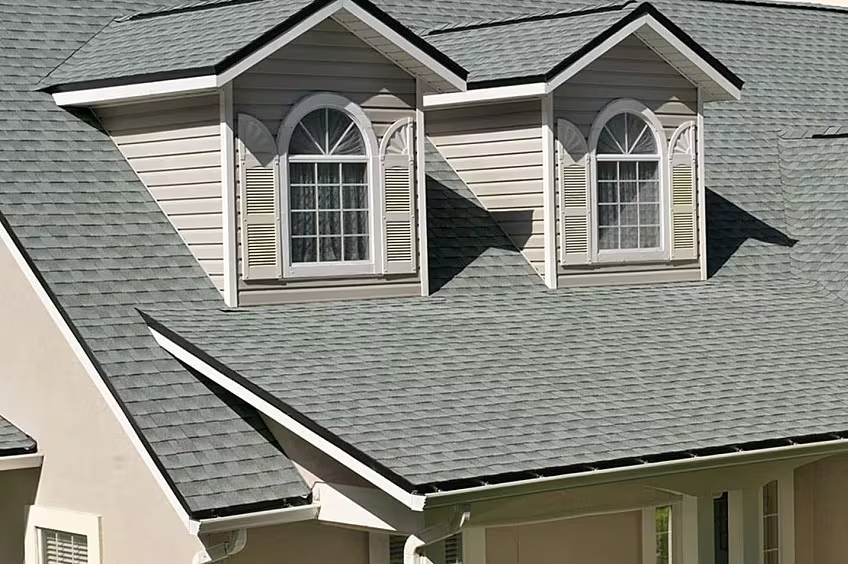When it comes to home maintenance, few systems matter as much as the roof. It protects the structure from wind, rain, snow, and heat while also affecting energy efficiency and overall home value. Yet many homeowners don’t realize that the quality of a roof depends on more than just the shingles. One of the most important factors is how the roof is installed—and whether the installer is trained to meet the standards required by the manufacturer.
In the roofing industry, one of the better-known training and certification programs comes from GAF, one of North America’s largest roofing manufacturers. Their certification process is designed to ensure that installers understand not only the product line but the specific methods required to ensure each roof performs as intended.
Whether you’re planning a future roof replacement or simply want to understand what “certified installer” means when evaluating contractors, this article provides a clear, non-promotional breakdown of how GAF roofing systems work, why certification matters, and what questions homeowners should ask before choosing an installer.
For homeowners who prefer working with roofers trained in these standards, it’s common to look for a GAF Certified Roofing Contractor—a distinction that indicates the installer has met defined training, insurance, and workmanship requirements.
Why Manufacturer Standards Matter More Than Most People Realize
Most homeowners shop for roofing materials based on durability or appearance. But what’s equally important is whether the installer follows manufacturer-approved methods. Roofing systems today aren’t just shingles—they’re integrated systems made of multiple components that must work together:
- Underlayment
- Ice and water shields
- Starter strips
- Drip edges
- Ridge caps
- Flashing
- Ventilation systems
Each piece plays a specific role. Even the most durable shingles can fail prematurely if the underlying structure is poorly installed or if certain components are missing or incorrectly positioned. Manufacturer standards are written to ensure that the system performs properly as a whole.
The Installation Process Is Now More Technical
Roofs installed 30–40 years ago were simpler and often relied on basic methods. Today, manufacturers like GAF use exact specifications, such as:
- Nail quantity and placement
- Required adhesive activation
- Proper ventilation ratios
- Required flashing overlaps
- Compatible underlayments
When these aren’t followed, the roof may look fine at first but degrade quickly under real-world weather conditions.
Understanding GAF’s Roofing System Approach
GAF’s approach focuses on the idea that a roof is a layered protective system, not just a single outer material. Their shingle systems incorporate:
1. Leak Barriers
Installed along roof edges and valleys, these guard against ice dams and wind-driven rain.
2. Roof Deck Protection
This layer helps moisture escape from inside the roof while preventing outside water from entering.
3. Starter Strips
These are essential for proper wind resistance; missing starter strips are one of the main causes of shingle blow-offs.
4. Shingles with Wind-Rated Performance
GAF shingles undergo testing for durability against lifting, tearing, and impact.
5. Ridge Cap Shingles
These help seal the roof at its highest stress point—the ridgeline.
6. Balanced Ventilation
Proper airflow prevents attic heat buildup, ice dams, and moisture issues.
Each part is an engineered component of the larger system. The advantage of having a certified installer is that they are trained specifically to assemble the system as designed, not just to “install shingles.”
What GAF Certification Actually Means
Many homeowners hear the phrase “certified installer” but may not understand what requirements are involved. GAF offers several certification tiers, each with its own criteria, but all require:
1. Verified Insurance and Licensing
To ensure homeowners are protected during installation.
2. Ongoing Training
Roofing practices change over time. Certified installers are required to stay current with manufacturer updates.
3. Proven Installation Quality
Contractors must demonstrate that they follow recommended installation methods—not improvised shortcuts.
4. Warranty Access
Certified installers can offer enhanced manufacturer warranties that are not available to uncertified roofers.
5. Commitment to Ethical Business Practices
Contractors must agree to customer service standards and dispute resolution processes.
Certification isn’t just a badge—it’s a set of verified commitments that protect homeowners from substandard work.
How Incorrect Installation Affects Roof Performance
Even with premium shingles, improper installation can cause:
Premature Granule Loss
Shingles lose granules early when nailed incorrectly or when ventilation is poor.
Wind Vulnerability
Improper starter strip placement or insufficient nail fastening can cause sections of the roof to lift or blow off.
Ice Dam Formation
Incorrect underlayment or poor attic ventilation increases the risk of ice dams during winter.
Leaks at Flashing Points
Skylights, chimneys, and roof valleys are the first areas to fail if flashing is installed wrong.
Reduced Manufacturer Coverage
Manufacturers can deny warranty claims if the roof wasn’t installed by a trained professional following their guidelines.
These failures often don’t appear immediately—they develop slowly, sometimes over several seasons.
Questions Homeowners Should Ask Before Choosing a Roofer
Regardless of which contractor a homeowner chooses, it’s smart to ask:
- Are you trained or certified by the manufacturer of the shingles you install?
- What warranty options are available, and are any enhanced warranties tied to your certification level?
- How do you ensure proper ventilation?
- What underlayment and leak-protection system do you use?
- Can you explain how your installation meets wind-resistance standards?
- Do you install full roofing systems or mix components from different manufacturers?
- Can you show photos of your recent installations or references from local homeowners?
These questions help homeowners evaluate skill level, attention to detail, and adherence to manufacturer specifications.
Why Many Homeowners Prefer Certified Installers
Certified installers typically have:
- Better training on specific product lines
- Fewer installation-related failures
- Access to stronger warranties
- Verified insurance coverage
- A deeper understanding of roof system engineering
This doesn’t mean uncertified installers are necessarily unskilled—but certification provides an extra layer of assurance rooted in documented training and testing.
Final Thoughts
Understanding roofing materials and installation standards empowers homeowners to make informed choices when repairs or replacements are needed. Certifications like GAF’s help bridge the gap between manufacturers, installers, and consumers by creating consistent expectations and protecting long-term roof performance. Whether homeowners choose to work with a certified installer or simply want to evaluate contractors more effectively, knowledge of these standards is one of the best defenses against premature roof problems.





